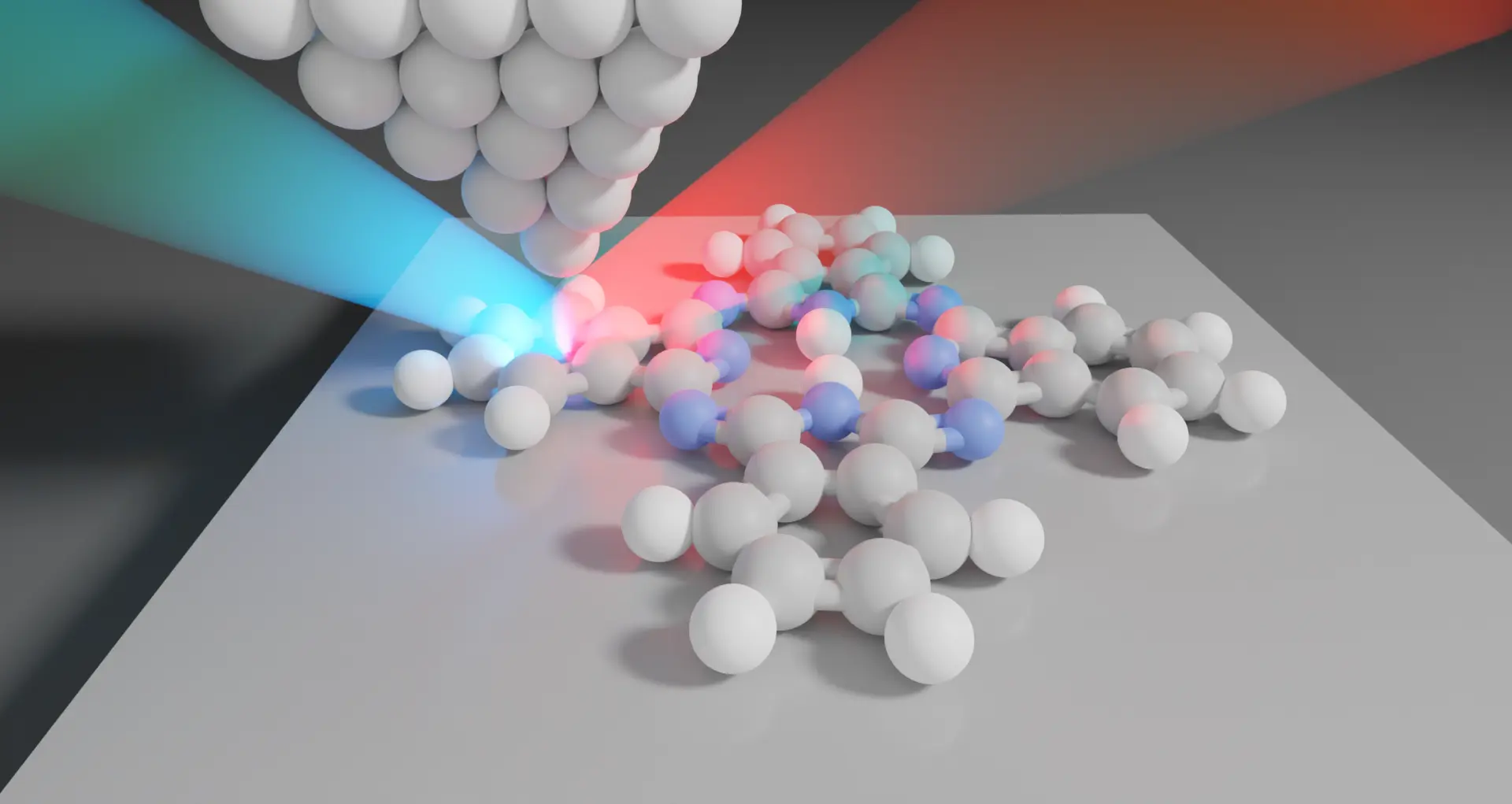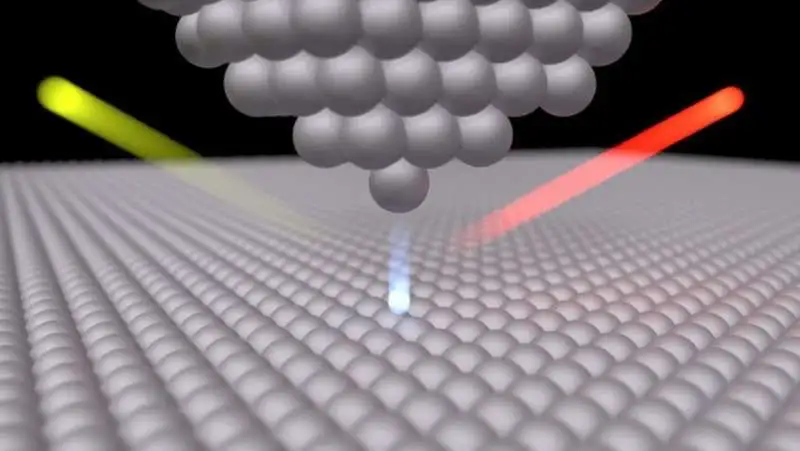Optical properties of single molecules and molecular architectures

Optically-active molecules initiate photosynthesis, vision, 3D printing, and are used in organic light-emitting diodes and organic solar cells - all of these processes are started at the level of one molecule absorbing or emitting a photon. To study these processes at their natural sub-nm scale, we use the possibilities offered by the atomic-scale optics. We are interested in studying the STM-induced luminescence (STML) and tip-enhanced photoluminescence (TEPL) of single molecules, probing the optical properties inside a molecule, and finding new ways of controlling them. In the next step, we put two, three, and more molecules together and probe how they couple to each other, how energy is transferred between them, and find new ways of improving the energy conversion efficiency. As a result, we can understand better fundamental processes behind photosynthesis and how to profit from optically active molecules in devices.
A. Rosławska, K. Kaiser, M. Romeo, E. Devaux, F. Scheurer, S. Berciaud, T. Neuman, G. Schull
Submolecular-scale control of phototautomerization
Nature Nanotechnology, 19, 738–743 (2024)
S. Cao, A. Rosławska, B. Doppagne, M. Romeo, M. Feron, F. Chérioux, H. Bulou, F. Scheurer, G. Schull
Energy funnelling within multichromophore architectures monitored with subnanometre resolution
Nature Chemistry, 13, 766-770 (2021)
A. Rosławska, P. Merino, C. Große, C. C. Leon, O. Gunnarsson, M. Etzkorn, K. Kuhnke, K. Kern
Single charge and exciton dynamics probed by molecular-scale-induced electroluminescence
Nano Letters, 18, 6, 4001–4007 (2018)
Controlling quantum properties of light at the atomic scale

A two-level system capable of emitting photons such as a defect in molecular layer/2D material or a single molecule is a single-photon emitter. Such light sources are key for developing quantum technologies and in our lab we study their quantum properties with sub-nm precision using Hanbury Brown-Twiss interferometry. We are also interested in other quantum light sources such as metal-metal tunnel junctions that can electrially generate pairs of photons.
P. Merino, C. Große, A. Rosławska, K. Kuhnke, K. Kern
Exciton dynamics of C60-based single-photon emitters explored by Hanbury Brown–Twiss scanning tunnelling microscopy
Nature Communications, 6, 8461 (2015)
C. C. Leon, A. Rosławska, A. Grewal, O. Gunnarsson, K. Kuhnke, K. Kern
Photon superbunching from a generic tunnel junction
Science Advances, 5, eaav4986 (2019)
A. Rosławska, C. C. Leon, A. Grewal, P. Merino, K. Kuhnke, K. Kern
Atomic-Scale Dynamics Probed by Photon Correlations
ACS Nano, 14, 6, 6366-6375 (2020)
Why does atomic-scale optics work?

Atomic-scale optics relies on the extreme localization and enhancement of electromagnetic fields at the atomically-sharp apex of the tip of the scanning tunneling microscope (STM) in the so-called picocavity geometry. This structure enables concentrating light in nanometric volumes, strongly amplifies fluorescence signals from an individual light-emitting molecule, and is sensitive to the changes of the optical properties with atomic-scale precision.
K. Kuhnke, C. Grosse, P. Merino, K. Kern
Atomic-scale imaging and spectroscopy of electroluminescence at molecular interfaces
Chemical Reviews, 117, 7, 5174-5222 (2017)
A. Rosławska, T. Neuman, B. Doppagne, A. G. Borisov, M. Romeo, F. Scheurer, J. Aizpurua, G. Schull
Mapping Lamb, Stark, and Purcell Effects at a Chromophore-Picocavity Junction with Hyper-Resolved Fluorescence Microscopy
Physical Review X, 12, 011012 (2022)